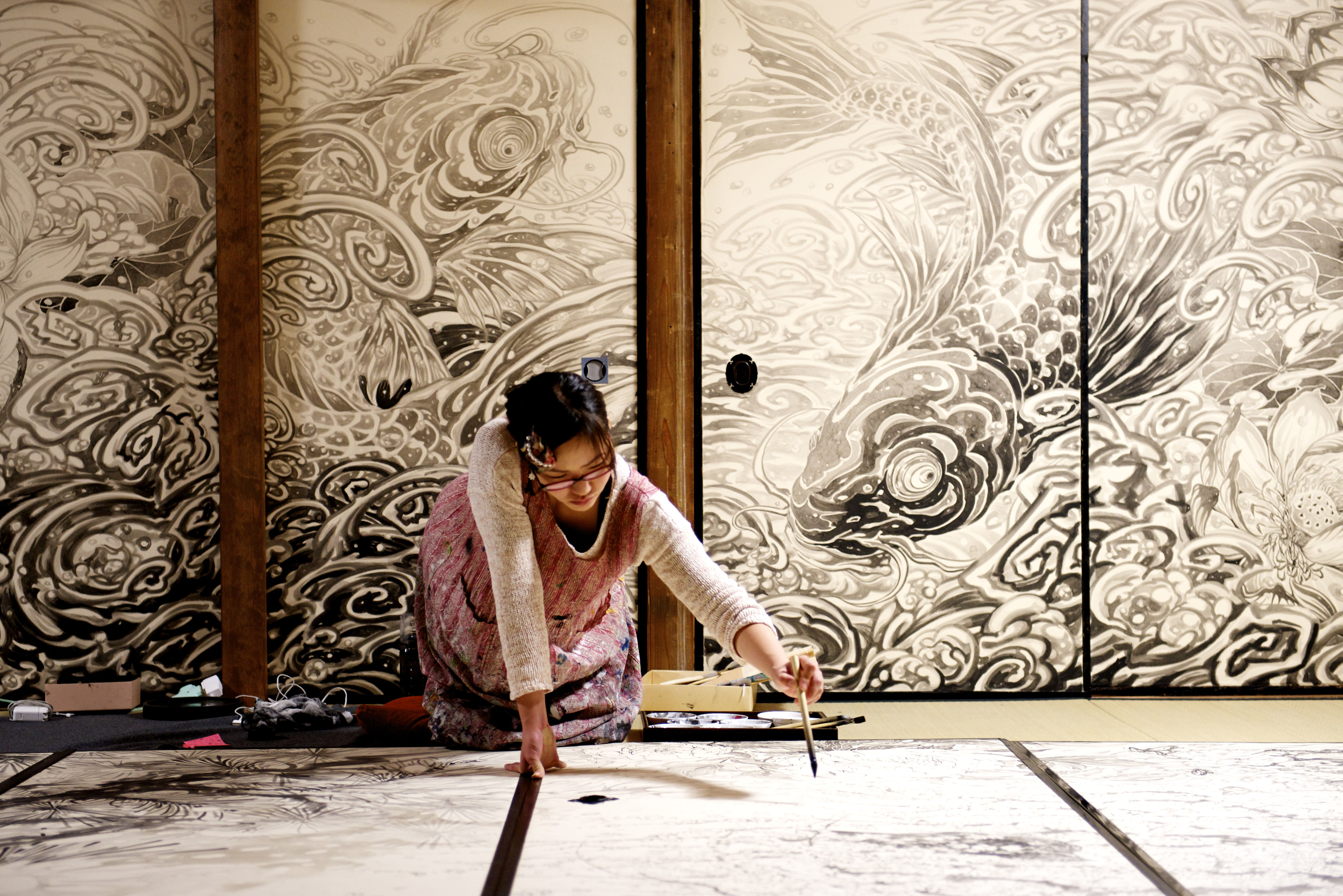While largely beneath the contemporary-art radar, painting for Japanese temples by the stars of the postwar art world is a relatively common activity, though largely restricted to nihonga (Japanese-style painting). Insho Domoto (1891-1975) provided interior decorations for temples all over the country, and two of the giants of postwar nihonga, Ikuo Hirayama (1930-2009) and Kaii Higashiyama (1908-1999) followed suit. Artists of the next generation such as Daisuke Hamada and Rieko Morita provided their services for big-name Kyoto temples such as Toji and Kinkaku-ji. While in more recent years, Hiroshi Senju has turned his superlative skills to Kyoto's Daitokuji Temple, as has Akira Yamaguchi for Byodo-in Temple.
The trend, for the most part, has been for well-established artists, and all of this continues the exceedingly long tradition of temple patronage for the leading artists of the day. Taizo-in subtemple, part of the sprawling Rinzai Zen complex of Myoshin-ji Temple in Kyoto and under the leadership of Deputy Chief Priest Daiko Matsuyama, however, is in pursuit of different aims that are at once traditional and contemporary, with the two reciprocally mandating one another.
The screen paintings in Taizo-in's main hall were painted by 17th-century artist Kano Ryokei and include scenery of the infamous Hangzhou West Lake in China. Outside the main hall one finds themes of a subtropical cycad plant and goats, all of which are essentially exotic, giving artistic form to places and things not native to Japan. According to Matsuyama, recycling the same concept for new works in the temple is anachronistic and meaningless in an age of international travel, Internet and smartphones. What is required is something new, though given the religious setting, not anything goes.

















With your current subscription plan you can comment on stories. However, before writing your first comment, please create a display name in the Profile section of your subscriber account page.